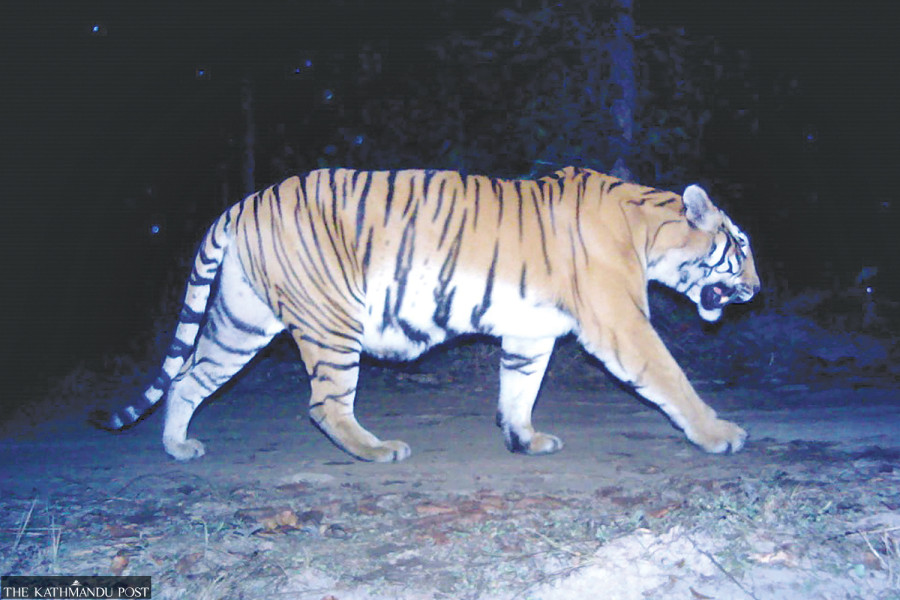National
Conservationists elated with thriving populations of tigers, rhinos in Shuklaphanta
The national park now faces challenges in managing habitat and prey along with the rise of tiger population in the park area.
Bhawani Bhatta
Conservationists and nature lovers are elated with the thriving population of endangered tigers and one-horned rhinos in Shuklaphanta National Park, Kanchanpur.
As per the count carried out two months ago, a total 44 tigers are found in the national park forests. According to the conservationists, 24 male tigers and 17 female tigers were recorded in the park while the gender of three additional tigers was not ascertained.
The result of the fresh tiger count was made public on the last day of wildlife week on Friday. The Shuklaphanta National Park started the monitoring and counting of tigers in the park from February 17 to March 5. The tigers were tracked and counted using the camera trapping method. According to the national census conducted in 2022, the number of adult tigers at Shuklaphanta National Park reached 36.
A national census of tigers is conducted in Nepal every four years. The national census of tigers conducted in 2018 put the number of adult big cats in Shuklaphanta at 16.
“Tiger population has been continuously increasing in Shuklaphanta,” said Pramod Bhattarai, chief conservation officer at Shuklaphanta National Park. “Conservationists are happy with the increasing number of tigers.” He, however, said that the national park now has challenges in managing habitat and prey along with the rise of tiger population in the park area.
The monitoring and counting of tigers were conducted by dividing Shuklaphanta National Park, which is spread over an area of 305 square kilometres, into 92 grids. A couple of camera traps were installed in each grid for 15 days.
Besides the national census, the national park also monitors and counts tigers regularly on a yearly basis, Bhattarai said. “Regular monitoring is essential in places that are prone to poaching and where tiger population is low.”
According to him, the movement of tigers has been recorded in all areas of the national park. “Tigers were not sighted in the extended areas of the national park two years ago,” he said. “The movement of tigers was recorded in the extended area of the national park this time.”
Established as a wildlife reserve in 1976 and declared a national park in 2017, Shuklaphanta is located in the southwestern corner of Nepal in the Sudurpaschim province. Shuklaphanta National Park, the country’s second youngest national park after the Parsa National Park, is the main habitat of swamp deer.
Similarly, the number of one-horned rhinos has also increased in Shuklaphanta. The number of rhinos increased to 23 in the park area now from 20 recorded last year. According to the national park administration, there are six male and 10 female rhinos while the gender status of seven rhinos has not been ascertained.
The Department of National Parks and Wildlife Conservation had conducted a study about possible rhino habitat when a rhino was spotted in the Ranital area of Shuklaphanta in 1995. Four rhinos had been translocated from Chitwan in 2000. In 2017, five more rhinos were shifted to Shuklaphanta from Chitwan.
During this year’s count, the conservationists have named tigers and rhinos found in Shuklaphanta National Park. “They have been named on the basis of their movement, age, marks in their bodies among others,” said Laxmi Raj Joshi, chief of Shuklaphanta Conservation Programme of the National Trust for Nature Conservation.
A male tiger of around five years which was recently separated from its mother and started roaming around the forest has been named Yuvaraj, or prince. The one which seems strong and ferocious has been named Maharaja, the king.
“Naming the tigers and rhinos will be helpful to count them and track their movement in next counting and monitoring,” said Joshi.




 11.12°C Kathmandu
11.12°C Kathmandu















